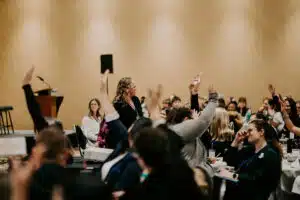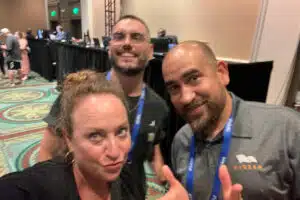
Change Is the Only Constant (And My Greatest Teacher)
Change is life’s greatest teacher. Discover how resilience, reflection and adaptability can guide us through every season of growth.
Did you miss Part 1 of this series? Read it now!
Welcome back!
I trust that you’ve found some headspace to consider whether you are being truly effective or only efficient. I hope you’ve also doubled down on scheduling activities that promote physical and social-emotional health into your calendar.
Without further ado, here comes another little batch of tenets & tools to help you raise your game another level.

Eat That Frog! In his book by the same title, Brian Tracy discusses this odd axiom often attributed to Mark Twain: If you start your day by eating a live frog, the rest of the day will only be better than that moment. In the world of productivity, this translates to choosing the ONE looming task that you’d most like to knock out—the one that is awful and you have trouble bringing yourself to get done, the one that’s weighing on you emotionally—and do it first thing in the day. From that point on, everything else is easy sailing and the day is already in the win column.
Use Parkinson’s Law to your advantage. Parkinson’s Law says that the amount of work you have to do will expand, as a gas, to fill the time you allot for it… i.e., if you decide you have until next Thursday at 5pm to plant that garden, you will not get it done a moment before that deadline. Use this natural human inclination to your advantage—set far shorter deadlines for yourself on projects that matter, but that don’t feel urgent. Create a sense of urgency, and you will get it done earlier than you had thought was possible.
Pomodoro Technique. Pomodoro is Italian for tomato. Also known as timeboxing, this technique entails using one of those tomato-shaped kitchen ticker-timers as your central prop. You set one for, say, 35 minutes, turn off anything correspondence related (unplug/turn off the phone, close email, etc), and dedicate yourself 100% to just one high-focus task until the timer goes off. When it does, force yourself to let the task be done for now. This form of short-burst, high-intensity mono-focus really helps people who are easily distracted or bored by projects; these people often reward their 35-min sprint with something enjoyable (like a meal or a friendly phone call) before starting their next punch on the Pomodoro.
Multi-Tasking vs. Monotasking. Some to-dos, such as writing a business proposal or driving on a busy highway, are high focus activities; others, such as chopping carrots or making the bed, require low focus. The essence of good multi-tasking is combining one HIGH focus with one LOW focus activity, such as listening to an engaging Ted Talk while folding laundry or reading a cerebral article while running on the treadmill. Productive people separate their to-do lists into “high focus” and “low focus” columns and look for opportunities to mix & match. They also recognize that some projects are too important to do during multi-tasking—for these, they follow the model of Sherlock Holmes in reveling in the profound productivity of monotasking. This NY Times article shares more about the power of concentration.
Routinize & Batch Small Decisions to Keep Them Small. Unproductive people waste a lot of energy on small decisions like what to wear or where to go for dinner this Friday night. Productive individuals’ “batch” their small decisions—they do them all at once. For example, they will prepare all of that week’s meals, or choose all of that week’s outfits, or do all of that week’s errands, in one focused batch of energy. Thus, they save themselves the angst of making manifold daily decisions about picayune concerns and open up mind space for accomplishing tasks of real value. Famously, Steve Jobs avoided decision fatigue by always wearing the same outfit, giving him one less thing to think about each day. If you’re a fashion maven, no need to follow his lead exactly— but find your version of the idea. There are real efficiencies to be gained through routinely batching tasks and decisions— and through setting boundaries on when and how much time you’ll allow yourself to spend on those topics.

Change is life’s greatest teacher. Discover how resilience, reflection and adaptability can guide us through every season of growth.

If you’ve ever joined a kid-grit training, you’ve heard us proudly say that our work supports people ages 5 to 105.

kid-grit and Mizzen Education have launched a brand-new series of 20 social emotional learning, life skills and wellness-based activities.